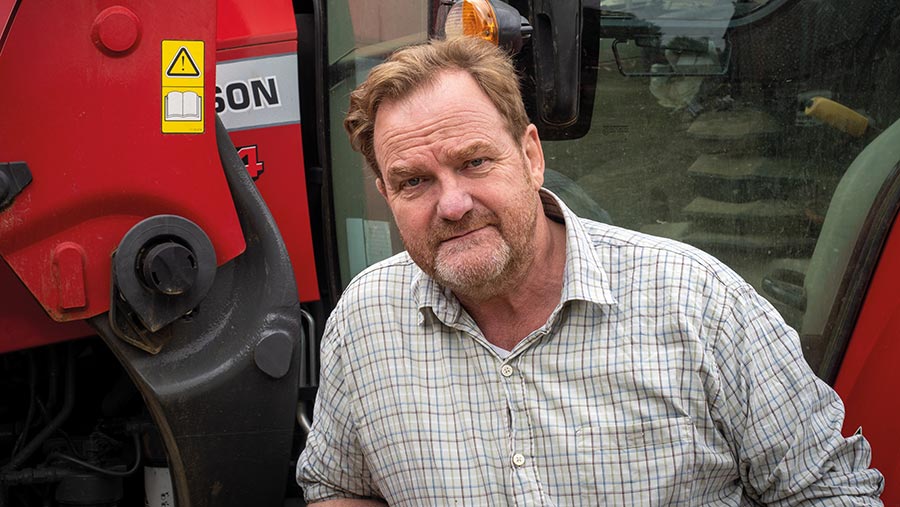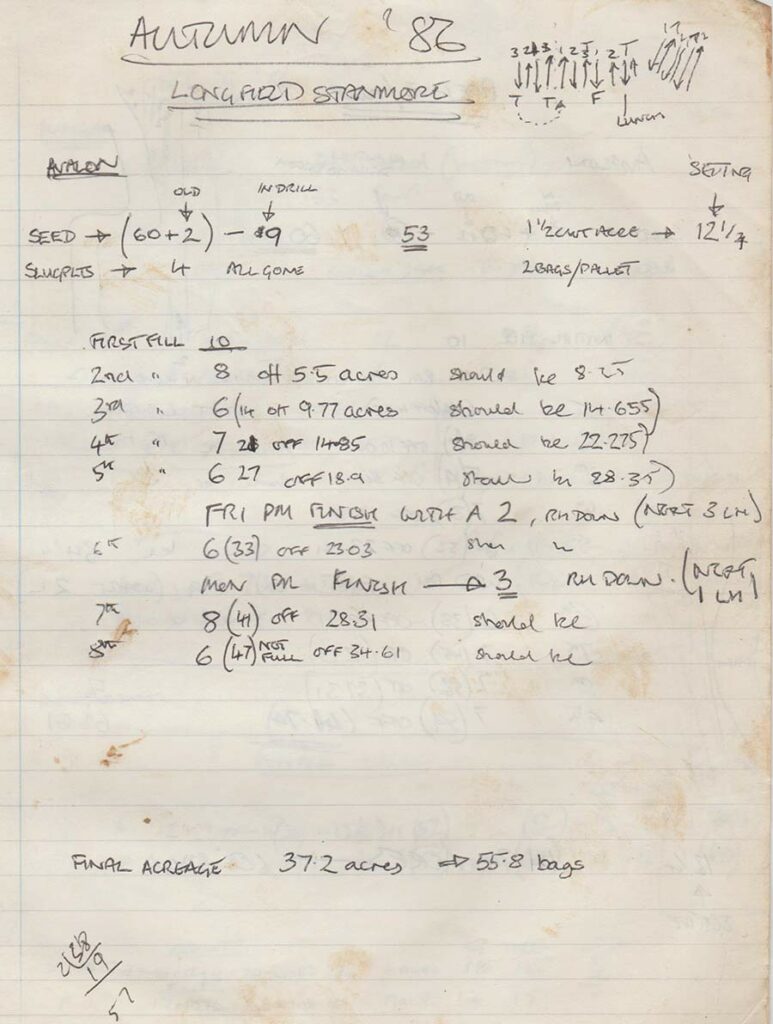Flindt on Friday: Seed shenanigans and a flirt with density
 © Kathy Horniblow
© Kathy Horniblow Suggesting a change to the way we do our pre-sowing calibration is not something to be done lightly.
After all, I remember the shock on this farm when it was mooted that we drop the well-established cwt/acre concept, and switch to plants/sq m.
The end of how we’d done it forever, and even how I did it when taking over drilling Avalon in 1986? Unthinkable!
See also: Video: Grower undersows wheat with clover to cut fertiliser costs
There was some weapons-grade harrumphing from Dad as I went through the concept of thousand grain weight, projected seed thickness of 375sq m (or whatever the rate was that year), and then showed him how we could work our way back to a seed rate in kg/ha, and then to cwt/acre.
He would counter-argue that you need more seeds if they are small and therefore (he claimed) have less vigor, and vice versa; the blanket “weight/area” covered that nicely.
It made his day when the final sowing rate, after all that button pushing, ended up at 1.5cwt/acre.
Maths destruction
Since then, of course, sowing by tgw and plants/sq m seems to have become widely accepted, and every bag comes with a tgw figure on the label.
I sometimes wonder how accurate that is, and how it manages to apply to whole batches of seed.
And then there are the big-name seed companies who take the carefully worked-out seed order and round it up by a couple of tonnes, rendering all that meticulous mathematics useless.
But I have a request for the seed companies and drill manufacturers: Can we start working in bulk seed densities?
I only ask because I was changing varieties the other day and had a first: I couldn’t be bothered to drive home to recalibrate.
You can’t blame me; the Gleam had run out perfectly on the last turn of headland, and it was Skyscraper time.

© Charlie Flindt
But I was miles from home and all the scales and buckets; and I’d forgotten to put the scales on top of the Aga for a day to make them work more accurately.
Driving home from the Folly would have meant the big ST4 fold-up, and taking on the narrow lanes full of non-reversing Audi SUVs.
I’d have to thread my way into the yard, clamber underneath the drill, flip the flap, play “thread the bucket”, and then do the whole thing in reverse.
Whereas I only had a short drive up to the heavy land, dried out to perfection, where I would be starting Skyscraper.
Density’s child
The tgw was different, the rate required was different; by all accounts, a trip home was needed. The lazy way was to say “what the heck”, put 500kg in and see where it runs out.
I confess (at the risk of failing my next ACCS inspection) that that’s what I did. And after a bag or four, I’d tweaked it to perfection.
How much easier it would be (I thought, as I made my 20m headland mark) if the drill control box could be told two things: first, the required seed rate, and second, the density of the seed – if printed on the bags.
There would be no need for buckets, scales or inter-tine yoga. After all, the calibration process is simply turning over the feed rotor a certain number of times – which is a measure of volume – and then weighing the product.
The result, although we don’t express is as such, is the density of the product.
Two numbers in the control box, and off you go. Simple, quick and easy. Mind you, I bet that it would end up at 168lb/acre again.
